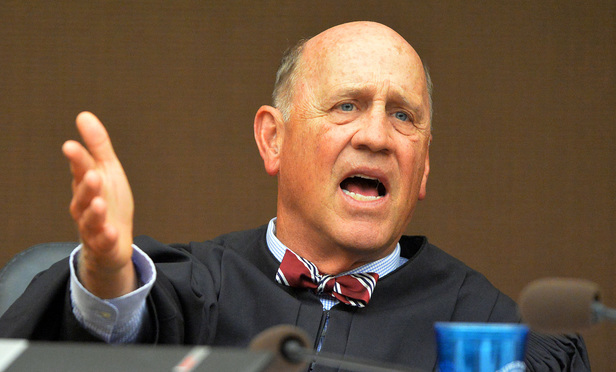By: Sam Kinsman
While the United Kingdom was preparing for the Summer Olympics, the banking industry in London was dealing with news of an interest rate-rigging scandal involving global banking giant Barclays and the London Interbank Offered Rate (LIBOR). In June, Barclays admitted its employees had attempted to rig interest rates through its submissions to LIBOR, an incredibly important set of rates used for financial contracts around the world. The story has since expanded to include hundreds of millions of dollars in bank settlements and the resignation of several top Barclays executives. Even the Bank of England, the British counterpart to the Federal Reserve, has been drawn into the investigation of the rate manipulation.
For many outside the industry, the story may seem the latest in a series of banking scandals to come to light, a story that finance savvy individuals will glance at and others overlook entirely. The implications of this story, however, are enormous. LIBOR affects several hundred trillions of dollars of financial contracts relevant to businesses, governments, and individual consumers around the world (to put that in perspective, the entire world GDP is estimated to be a mere 70 trillion dollars). Journalists, academics, and regulators have spilled much ink already this summer seeking to understand the full impact of the scandal and to begin developing a better system that can’t be manipulated. Nearly every individual is affected by LIBOR, either directly through consumer loans (mortgages, credit cards, auto loans) or indirectly through the banking system that uses LIBOR as a benchmark for interest rates.
What is most important for consumers regarding LIBOR? It has a huge impact on your personal finances including how much you will pay to buy a house or car, the interest you pay on credit card balances, and the returns you make on invested savings. For most students, LIBOR impacts the rate they pay to chip away at student loan debt. What is most important about the scandal on the whole? It’s just the beginning.
What is LIBOR?
The London Interbank Offered Rate (actually a collection of 150 different rates) is used to reflect the average interest rate banks would be charged to borrow from another bank on any given day. It was created in the early 1980s when bankers and regulators in London saw the need for a uniform daily borrowing rate between banks. Today, LIBOR rates are calculated daily in 10 different currencies, each for 15 different maturities ranging from one day to twelve months (for example, the rate to borrow Swiss Francs for a day or a week).
How is it calculated? How is it used?
Note: To skip to the discussion of the scandal’s impact, continue to the next paragraph. For readers interested in the details of calculating LIBOR, keep reading.
LIBOR rates are calculated using a daily poll that asks banks what they would pay to borrow money from each other (for the different currencies and maturities). For the U.S. Dollar LIBOR, 18 member banks respond to the poll each morning before 11:00 AM. The top 25% and bottom 25% of responses are then tossed out, and the remaining 50% are averaged to produce the official LIBOR rates of the day. The ability for any bank (or group of banks) to manipulate the rates comes from the use of the polling method described as “gymnastics-scoring-meets-clairvoyance” by Wall Street Journal writer, Francesco Guerrera. Banks need only to submit lower or higher numbers to skew the final results.
For consumer loans, LIBOR is most often used as a base rate for adjustable-rate loans (such as a floating rating mortgage). A homeowner, for example, might pay an interest rate of LIBOR plus 5% on their mortgage, meaning that the actual rate they pay “floats” depending on the daily LIBOR set by banks. Likewise, students whose loans are tied to LIBOR (about 50 percent of all private student loans) will pay a specified interest rate above the floating benchmark.
The scandal
The full details of the LIBOR rigging scandal are still coming to light, but for now, it seems clear that Barclays employees made an effort on multiple occasions to make interest rates lower than they would have otherwise been. Bank officials have stated that, among other reasons, government officials wanted them to keep interest rates from spiking higher in 2008 when investors were worried about the state of the global economy. The lower rates, they hoped, would send signals of confidence to investors, which would benefit the financial markets. In response to this news, an indebted consumer might at first think: what is the problem with lower rates? In fact, all else equal, a consumer would pay less for their mortgage or student loan than they would have before. The problem lies on the other side of the equation. While one consumer wins because of lower rates, another investor somewhere else loses. These losing investors range from individuals investing their hard earned savings for college to pension funds investing for public employees retirement money to banks and other institutions whose earnings are tied to the rate. When LIBOR rates are even just a fraction of a percentage point lower, the losses can add up to billions of dollars.
What lies ahead
What remains after the first chapter in the scandal is the difficult task of “fixing” the submission process to LIBOR. Many people have advocated for changing the calculation of LIBOR from a polling process to a system that uses actual market data, but this idea is difficult to implement in practice in some of the more obscure currencies and continues to be debated. In addition, we can expect more bank investigations, lawsuits, and hundred million dollar settlements as attorneys around the world suit up to fight for money their clients may have lost as a result of the rigged rates. Domestic and foreign municipalities have already sued banks for potential losses, and several U.S. states recently announced their own investigations of their losses. LIBOR’s importance to the financial system almost ensures that the scandal’s impact will spread.
The attention this story has received makes it unlikely any bank would risk its reputation in the near future by trying to manipulate the LIBOR rates again. Efforts to fix the rate, however, are not just lofty ideals part of a mysterious banking system. The rates impact individual consumers, students, and families everyday on how much they are paying for the debt in their lives. Transparent, fair markets are also crucial for confidence in the economy, precisely what the country needs to spur investment and tackle current issues of unemployment and lukewarm economic growth. This confidence should be a primary focus for the government and the banking industry in order to stimulate the investment businesses make when they want to take risks. These investments hire people, produce new products, and result in more tax dollars (which means less deficit), all things that help make United States a leader in the world.

